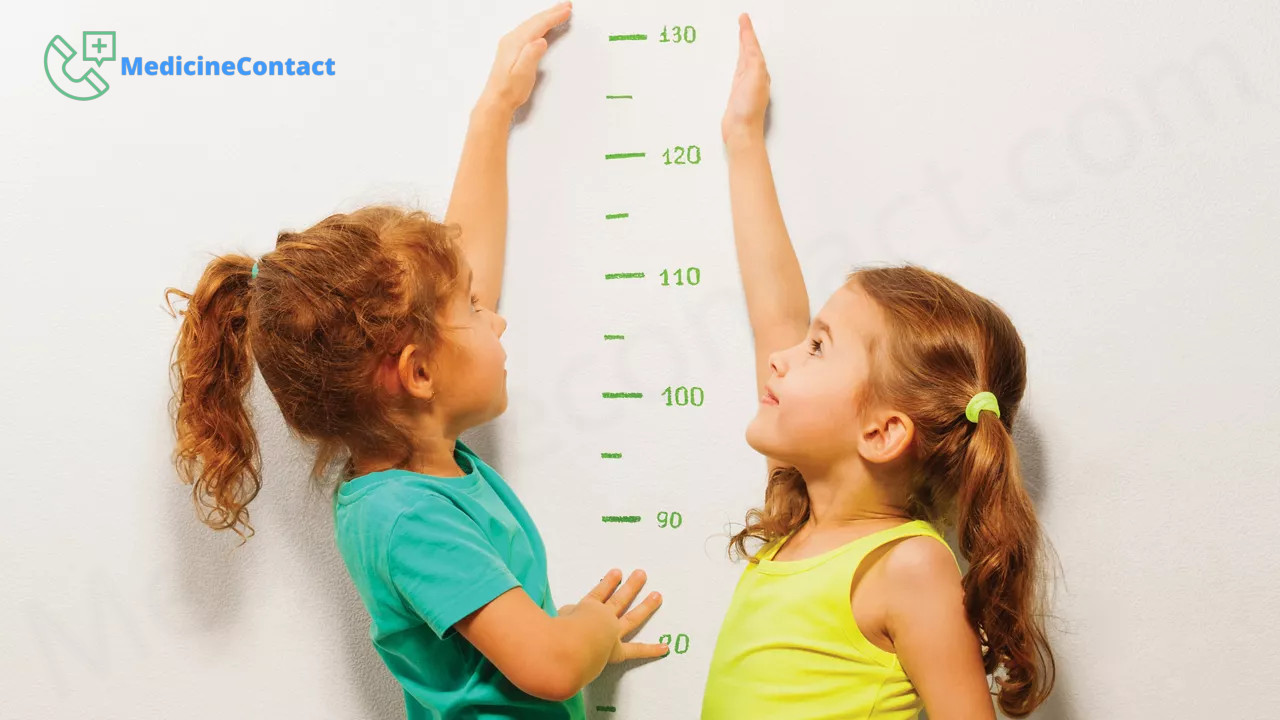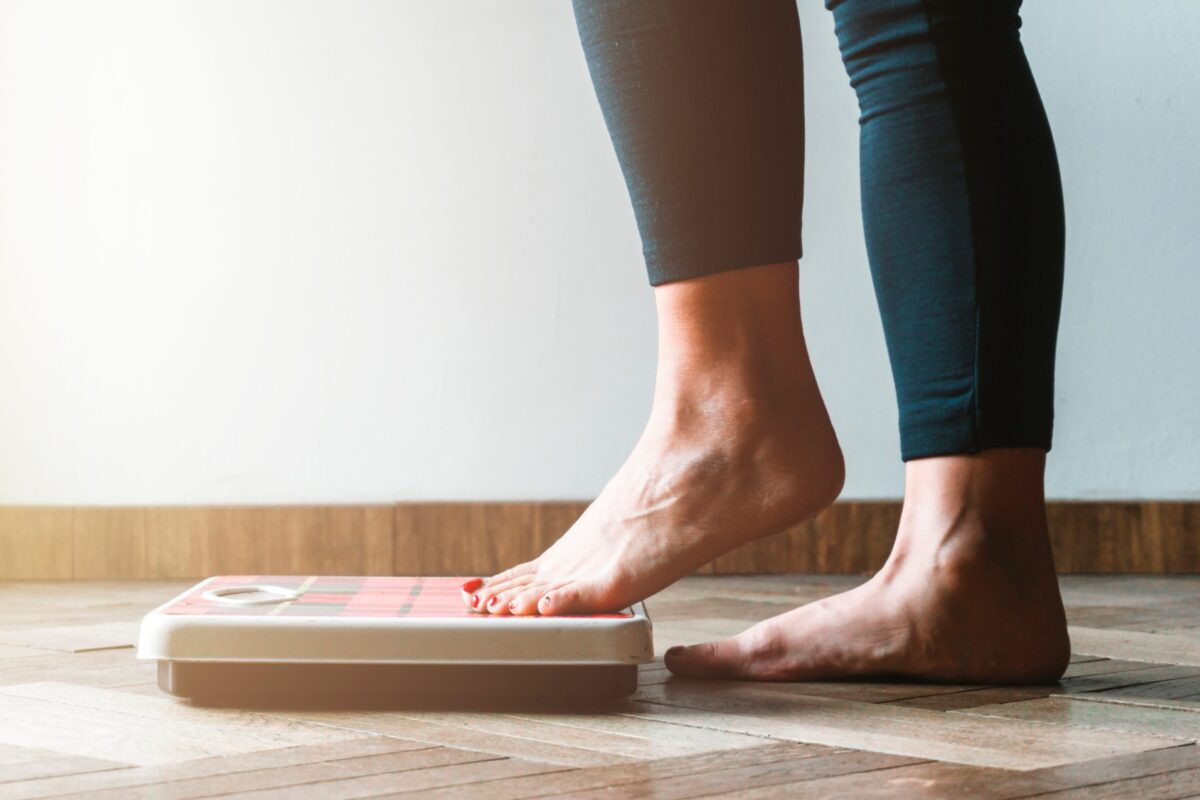
How to Accurately Measure Your Height at Home
Measuring height might seem straightforward, but achieving accurate results at home is crucial for various health assessments and wellness checks. Whether you're updating your medical records or simply curious about your stature, understanding how to accurately measure height is valuable.
Accurate height measurements play a significant role in monitoring growth in children, assessing nutritional status, and evaluating overall health. Even small inaccuracies can lead to incorrect health recommendations or misinformed decisions.
In this article, you'll learn:
- Why precision matters in height measurement.
- Step-by-step methods for measuring your height at home.
- Tools and tips to ensure you get the most accurate results possible.
You will have the confidence and knowledge to measure your height accurately at home, whether you're doing it alone or with assistance.
Understanding Height Measurement
Height is the vertical measurement of a person from the bottom of their feet to the top of their head. It is important in various health situations, such as checking how children are growing, figuring out body mass index (BMI), and deciding the right amount of medicine to give.
Units of Measurement
Height is usually measured in two common units:
- Inches: Mainly used in the United States.
- Centimeters: Commonly used worldwide and preferred in scientific and medical fields.
To easily switch between these units:
- 1 inch equals 2.54 centimeters.
- 1 centimeter equals 0.3937 inches.
Knowing these units helps make sure height measurements are consistent and accurate, which improves the reliability of health assessments and personal records.
Factors Influencing Height Measurements
Several factors can influence height measurements, impacting accuracy and consistency:
- Genetics: Genetic makeup plays a significant role in determining an individual's height. Traits inherited from parents often set the baseline for growth potential.
- Nutrition: Proper nutrition during childhood and adolescence is crucial. Diets rich in vitamins, minerals, and proteins support growth and bone health.
- Time of Day: Height can vary slightly throughout the day due to spinal compression. People are generally taller in the morning after a night's rest compared to the evening.
Recognizing these factors helps in understanding variations and achieving more accurate measurements.
Preparation Steps for Accurate Height Measurement
Accurate height measurement begins with proper preparation. Here are some essential steps to ensure your readings are precise:
Choose a Flat Surface Near a Wall
Selecting a flat surface next to a wall is crucial for accurate measurement. An uneven surface can lead to incorrect results by tilting your posture or affecting the placement of measuring tools. Opt for a smooth, hard floor and ensure the wall is free from obstructions.
Prepare for Measurement
Before you start, remove any items that could interfere with the measurement:
- Shoes: Always measure height barefoot to avoid adding extra inches.
- Socks: Even thin socks can slightly alter your height reading.
- Headwear: Remove hats, hair bands, or anything else on your head.
Maintain a Straight Posture and Proper Body Alignment
Standing straight is key to getting an accurate height measurement. Follow these tips for correct posture:
- Feet Together: Place your feet flat on the ground, heels touching.
- Back Against the Wall: Stand with your back fully against the wall, ensuring your shoulders and buttocks are in contact with it.
- Chin Tucked In: Keep your chin level and tuck it in slightly.
- Straighten Up: Ensure that your body is aligned and straight from head to toe.
By following these preparation steps, you'll be well-prepared to accurately measure height at home.
Methods for Measuring Height at Home
Step-by-Step Guide for Measuring with Assistance
Measuring with assistance can greatly improve the accuracy of your height measurement. Follow these steps:
- Preparation:
- Stand against a flat wall without any baseboards.
- Ensure your feet are together, and your back is straight.
- Remove shoes, socks, and headwear.
- Positioning:
- Have the helper place a flat object (like a book or ruler) on top of your head.
- The object should be held parallel to the floor.
- Marking:
- The helper should mark the wall where the bottom of the object touches it.
- Use a pencil or sticky note to avoid permanent marks.
- Measuring:
- Measure the distance from the floor to the marked point using a measuring tape.
Using a Flat Object to Mark Height Accurately
- Select a flat, sturdy item such as a book or ruler.
- Stand straight against the wall and ensure that your heels, buttocks, shoulders, and head are touching it.
- Position the object on top of your head, making sure it forms a right angle with the wall.
- Mark the point where the bottom edge of the object meets the wall accurately.
Solo Measurement Techniques
If you need to measure your height alone, creative solutions using household items can be effective:
Using a Cereal Box
- Preparation:
- Stand against a flat wall with no baseboards.
- Ensure you are in bare feet and have removed any headwear.
- Positioning and Marking:
- Take an empty cereal box and place it on top of your head while standing straight.
- Hold it firmly so it's parallel to the ground.
- Marking Point:
- Carefully slide out from under the box while keeping it steady against the wall.
- Mark where the bottom of the box touches the wall.
- Measuring Distance:
- Measure from the floor to this mark using a measuring tape.
Using Adhesive Tape
- Preparation:
- Stand against a flat wall in bare feet, with no headwear.
- Marking Technique:
- Stick a piece of adhesive tape on top of your head so that one end hangs down in front of your face.
- Press lightly against your forehead to keep it in place.
- Transferring Mark:
- Step away from the wall carefully while holding onto the tape's hanging end.
- Place another piece of tape horizontally at eye level across this hanging end to form an 'L' shape marking your height.
- Measurement Process:
- Use a measuring tape to measure from floor level up to this horizontal piece of tape.
With these methods, you now know how to accurately measure height at home using assistance or solo techniques involving everyday objects like cereal boxes or adhesive tapes. This allows anyone wondering how to check height at home to do so reliably and accurately under varied circumstances.
Tools Needed for Accurate Height Measurement
Accurately measuring your height at home requires the right tools to ensure precision. Here’s a list of both basic and advanced tools you can use:
Basic Tools
- Measuring Tape: A flexible, retractable tape measure is essential for determining the distance from the floor to your height mark on the wall.
- Pencil: Useful for marking the point on the wall where the top of your head reaches.
- Flat Object: Items like a book or a cereal box can help you create an accurate mark at the top of your head.
Advanced Tools
- Stadiometer: For those seeking more precise measurements, a stadiometer is an excellent investment. This device consists of a vertical ruler and a horizontal headpiece that slides down to rest on the top of your head.
Advantages of Using a Stadiometer:
- Accuracy: Provides highly accurate measurements due to its design and calibration.
- Ease of Use: Simple to operate, often used in medical settings.
- Consistency: Reduces variability in measurements, ensuring reliable results every time.
Utilizing these tools correctly will help you achieve accurate height readings, which are crucial for health assessments and tracking growth or changes over time.
Ensuring Consistency in Measurements
Consistency in measurements is crucial to obtain reliable and accurate height readings. Measuring under consistent conditions ensures that the results are comparable over time, which is important for tracking growth, health assessments, and wellness goals.
Key Points for Consistency:
- Time of Day: Height can fluctuate slightly throughout the day due to spinal compression. Measuring at the same time each day, preferably in the morning, can help maintain consistency.
- Measurement Environment: Always measure on a flat surface near a wall to avoid discrepancies caused by uneven floors. Ensure the same location is used each time to eliminate environmental variables.
- Preparation and Posture: Follow the same preparation steps every time. Remove shoes, socks, and headwear, stand with your back against the wall, feet together, and maintain a straight posture with your chin tucked in.
By adhering to these guidelines, you can ensure that your height measurements are consistent and accurate, providing valuable data for health monitoring and personal records.
Converting Measurements: Inches to Centimeters and Vice Versa
Accurate height measurement often requires converting between inches and centimeters. Understanding this conversion process is crucial, especially for those who need to record their height in different units for various purposes.
Basic Conversion Formula
- To convert inches to centimeters: Multiply the number of inches by 2.54.
- To convert centimeters to inches: Divide the number of centimeters by 2.54.
Examples
- Inches to Centimeters: If your height is 65 inches, you calculate (65 \times 2.54 = 165.1) cm.
- Centimeters to Inches: For a height of 170 cm, you compute (170 \div 2.54 = 66.93) inches.
Practical Tips
- Use a calculator for precise conversions.
- Many online tools and mobile apps can help with quick conversions.
- When measuring, always double-check your converted results for accuracy.
Understanding the Importance
Converting measurements accurately ensures consistency in health records, fitness tracking, and everyday applications like purchasing clothing or equipment that require specific height measurements.
This guide provides the essential steps and examples needed to master your height conversion tasks effectively, ensuring your records are both accurate and reliable.
Average Heights and Health Implications
Understanding average adult heights provides valuable context for health assessments and personal wellness. These averages can vary significantly based on several factors, particularly gender and geographical location.
Average Heights by Gender
- Men: In many countries, the average height for adult men ranges from 5 feet 7 inches to 6 feet. For example, in the United States, the average male height is approximately 5 feet 9 inches.
- Women: Adult women generally have an average height between 5 feet 2 inches and 5 feet 6 inches, with the U.S. average being around 5 feet 4 inches.
Read more in the Ideal Weight Calculator: Find Your Healthy Range by Age & Height article to find out your ideal weight.
Geographical Variations
Heights can differ widely across countries due to genetics, nutrition, and environmental factors. For instance:
- Netherlands: Known for its taller population, with an average male height of about 6 feet.
- Southeast Asia: Countries like Vietnam report lower averages, with men averaging around 5 feet 4 inches.
Health Implications
Maintaining awareness of these averages is important. Height can influence health risks associated with conditions such as obesity or cardiovascular diseases.
By understanding where you fit within these averages, you can better gauge your health status and take necessary steps toward wellness.
Conclusion: Mastering the Art of Measuring Your Height at Home!
Accurately measuring your height at home is not only convenient but also essential for maintaining an up-to-date understanding of your health and well-being. The techniques and tips discussed in this article provide a comprehensive overview of how to accurately measure height, ensuring you have all the tools needed for precise measurements.
Taking the time to learn how to check your height at home can be a valuable skill. Whether you are using a helper or measuring alone, following the correct steps will give you reliable results. Remember, consistency is key—measuring under similar conditions each time will help maintain accuracy.
If you are curious about how to calculate your height at home or have ever wondered, "how can I check my height at home?", this guide offers practical solutions and insights. From understanding the influence of genetics and nutrition on your height to knowing how to convert measurements between inches and centimeters, you are now equipped with the knowledge to monitor your stature effectively.
Should you seek more precise readings, consider investing in advanced tools like stadiometers or consulting a healthcare professional. By mastering these methods, you ensure that you can always accurately check how tall you are at home.
Feel empowered to share this newfound knowledge with friends and family, helping them discover how to know their height at home. Engaging in regular self-assessments can lead to better health awareness and proactive wellness management.
FAQs (Frequently Asked Questions)
Why is it important to measure my height accurately?
Accurate height measurement is essential for health assessments and wellness. It can help in tracking growth, assessing body mass index (BMI), and determining appropriate dosages for medications.
What tools do I need to measure my height at home?
To measure your height accurately at home, you will need a measuring tape, a flat object like a book or a ruler to mark your height, and preferably a pencil to make notes. Advanced tools like stadiometers can also be used for greater precision.
How can I ensure consistency when measuring my height?
To ensure consistency in measurements, always measure under the same conditions. This includes using the same flat surface, standing straight with your back against the wall, and measuring at the same time of day.
What are some methods for measuring my height alone?
You can measure your height alone by using household items like a cereal box to mark your height on a wall. Stand straight against the wall, place the box on top of your head, and then measure from the floor to the mark you made.
How do I convert my height from inches to centimeters?
To convert inches to centimeters, multiply the number of inches by 2.54. For example, if you are 64 inches tall, you would calculate 64 x 2.54 = 162.56 centimeters.
What factors can influence my height measurement?
Several factors can influence your height measurement including genetics, nutrition, and even the time of day. It's best to measure your height in the morning when you are fully stretched out after resting.
Disclaimer: This article is for informational purposes only and does not constitute medical advice. Always consult with a healthcare professional before starting any new treatment regimen.



